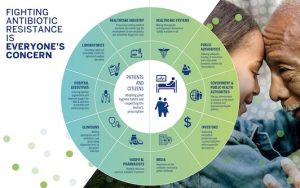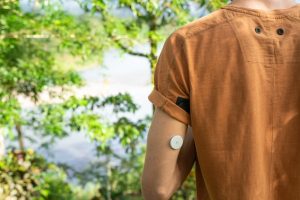How Nurses Known as ‘Black Angels’ Helped Save TB Patients

Good morning. It’s Tuesday. Today we’ll look at an exhibition about Black nurses who were recruited to care for tuberculosis patients in the mid-20th century.
In the early 20th century, tuberculosis was raging in New York City, killing thousands of people each year. The city’s health department chose Staten Island in 1905 as the location for Sea View Hospital, which became one of the biggest tuberculosis hospitals in the country.
But tuberculosis was highly infectious, and by the 1930s the number of white nurses willing to risk their lives to care for Sea View’s patients was dwindling. Administrators started calling on workers often overlooked because of racism: Black nurses.
An exhibition now on view at the Staten Island Museum, “Taking Care: The Black Angels of Sea View Hospital,” tells the story of 300 Black nurses who were recruited. The name Black Angels came from patients and was embraced by the nurses, said Gabriella Leone, a curator.
But wall text at the exhibition reminds visitors that the nurses “were real people with individual lives, families, flaws and stories.”
The museum is about five miles from the Sea View campus, in the heart of the Greenbelt, a parkland area on Staten Island.
“It was an attractive place to build a hospital because it was the least populous of the boroughs, and it had a reputation for fresh air and sunshine,” Leone said during a recent exhibition tour, noting that air and sun were then thought to be the most effective treatments for tuberculosis.
The hospital first recruited Black nurses locally, from the Lincoln School for Nurses in the Bronx and the Harlem Hospital School of Nursing. But by the 1950s Sea View still had a shortage, so the call for Black nurses went national. As the Great Migration pushed forward, the Black Angels assembled on Staten Island to fill the void.
One of the women who stepped in to fill the void was Virginia Allen, now 92, who lives in what used to be Sea View’s nurses’ residence. In 2009, it became a private retirement home; her apartment is on the same floor of the same building she lived in during the 1940s.
Unlike Allen, many of the nurses were lured from the Jim Crow South by the promise of a living wage when most hospitals, even in New York, refused to work with Black nurses or limited the number they would hire, according to one of the exhibition’s oral histories. But Allen arrived in 1947, at age 16, from Detroit. Her aunt Edna Sutton-Ballard, then a surgical nurse at Sea View, inspired her.
“I admired my aunt,” Allen, one of the exhibition’s advisers, said, adding: “The other nurses, the adults, adopted me. It was a real community.”
Allen started as a nurse’s aide at the Sea View children’s hospital. According to the exhibition, 3 to 7 percent of nurses at Sea View contracted tuberculosis. Allen was never scared, though.
“I loved being around children,” she said. “And I felt I knew how to protect myself.”
By the time she left the hospital in 1957, she and her fellow Black Angels had played a major role in protecting the public. Sea View conducted the first clinical trials of isoniazid, a drug that became a key in treating the disease, in 1951. On the front lines of that trial were the nurses, who administered the medicine, observed patients and took detailed notes to report to doctors.
A panel of museum text sums up what happened next: “Drs. Edward Robitzek and Irving Selikoff, who oversaw the trial, went on to receive the prestigious Lasker Award for their work. But the nursing and support staff who risked their lives to keep Sea View Hospital running have not received the same recognition.”
Dr. Oni Blackstock, the founder and executive director of Health Justice, a racial and health equity consultancy in New York City, said that the Black Angels “were courageous trailblazers.” She sees “definite parallels” between the Black Angels and the nurses who cared for dying patients early in the coronavirus pandemic.
“We know that those hospitals that were most beleaguered during the pandemic were in poor Black and brown neighborhoods, which were already under-resourced and understaffed,” she said.
Black nurses who couldn’t afford to leave their jobs as Covid bore down on New York City “were literally putting their lives on the line taking care of patients, with an infection that hadn’t yet had an F.D.A.-approved treatment or a vaccine to prevent it,” she added.
Allen, who said the nurses she worked with “really did give up a lot” to treat patients at Sea View, is relieved that they are receiving more notice. The exhibition includes an original Sea View nursing cart as well as a wool cape that was part of the nurses’ outdoor uniform. A book by Maria Smilios, “The Black Angels: The Untold Story of the Nurses Who Helped Cure Tuberculosis,” came out in the fall.
“I’m very happy the legacy will live on,” Allen said.
Weather
A mostly sunny day, with temperatures in the high 70s. At night, temperatures will drop to the low 60s.
ALTERNATE-SIDE PARKING
In effect until June 12 (Shavuot).
At around 1:30 a.m. Monday, two New York City police officers tried to pull over a 19-year-old man who, officials said, was riding a motorbike the wrong way down a one-way street along a deserted stretch of Queens near La Guardia Airport.
The officers were patrolling the area, in East Elmhurst, as part of an effort to address a recent spate of robberies there involving people on mopeds and scooters, Commissioner Edward A. Caban said at a news conference.
When the officers tried to stop the man, he got off the bike and ran, the commissioner said. When they caught up with him after chasing him for several blocks on foot, the man fired several shots at them, and they returned fire.
One officer was shot in the leg, officials said; the other was shot in the front of his bulletproof vest. The officers were taken to New York City Health and Hospitals, Elmhurst, for treatment and later released.
“This is a bullet hole,” Mayor Eric Adams said at the news conference while displaying the bulletproof vest. “Because of this vest, a young police officer is going home.”
The man involved in the shooting, identified by the police as Bernardo Raul Castro Mata, was struck in the right ankle, officials said. He was taken to NewYork-Presbyterian Queens, where he was in custody on Monday, officials said.
The motorbike Mata was driving was not registered, Joseph Kenny, the Police Department’s chief of detectives, said at the news conference. Mata has not previously been arrested in New York City, but he is a suspect in several robberies that followed a similar pattern in Queens, Kenny said.
Until recently, Mata had been staying at a shelter on Ditmars Boulevard in Queens, officials said.
The number of shootings in the city is down significantly so far this year compared with 2023, police statistics show. As of May 26, 375 people had been shot in the city this year, a 12 percent drop compared with the same period last year.
Shootings are rare in East Elmhurst, which is within the 115th Precinct. There were none in the area through May 26, police statistics show, and only two people were shot in the precinct during the same period last year.
The number of robberies in the precinct, on the other hand, has increased nearly 34 percent through May 26, to 143 from 107, compared with the same period last year. Citywide, Kenny said, scooters and motorbikes are being used to commit a growing number of crimes.
METROPOLITAN diary
Taking Turns
Dear Diary:
I was riding the C train to an evening class at City College. It was rush hour, and I was standing shoulder to shoulder with others in the packed car when the train slowed to a crawl between stations.
It was summer, and the car was steaming hot. The air-conditioning was broken, and only a couple of the windows could open all the way.
I was not feeling well after a difficult week and was struggling to stay upright as the wait wore on. After a half-hour or so, I managed to squat on the floor and lower my head.
I soon felt a gentle hand on my shoulder and was then guided to a seat a few feet away that seemed to have been made empty just for me. I expressed my appreciation, though I could not see who was guiding me nor who had sacrificed a seat. The car was too crowded.
After sitting for several minutes, I noticed that a passenger standing near me was at the limit. Feeling my energy somewhat restored, I swapped places with this person.








